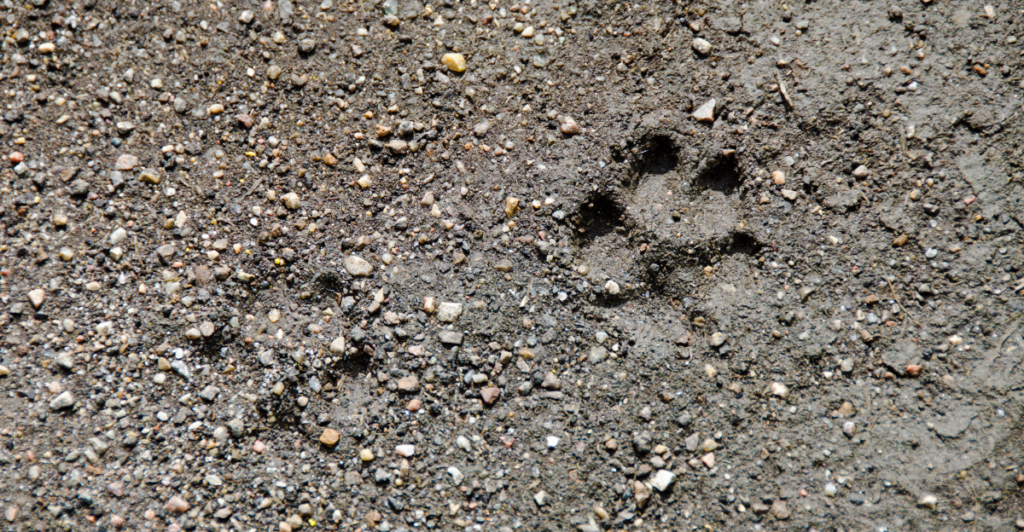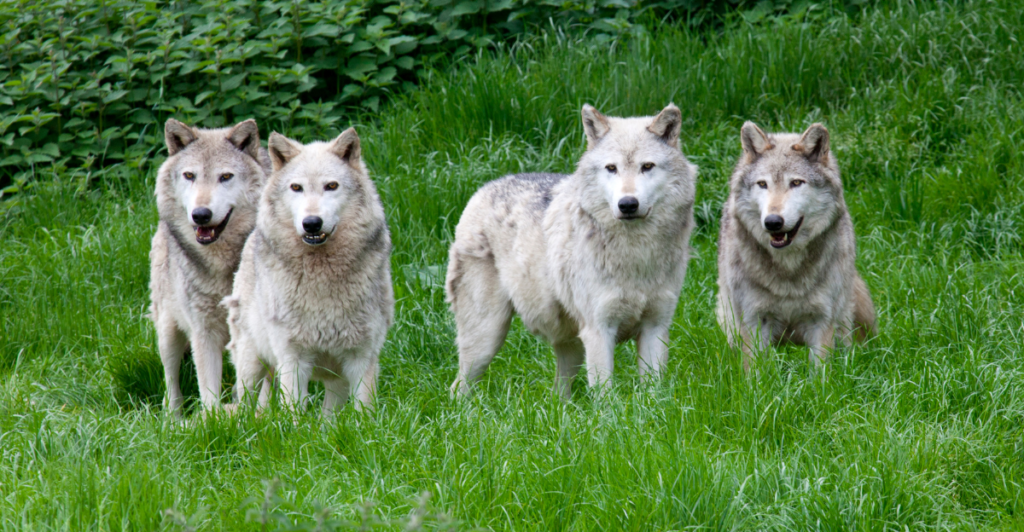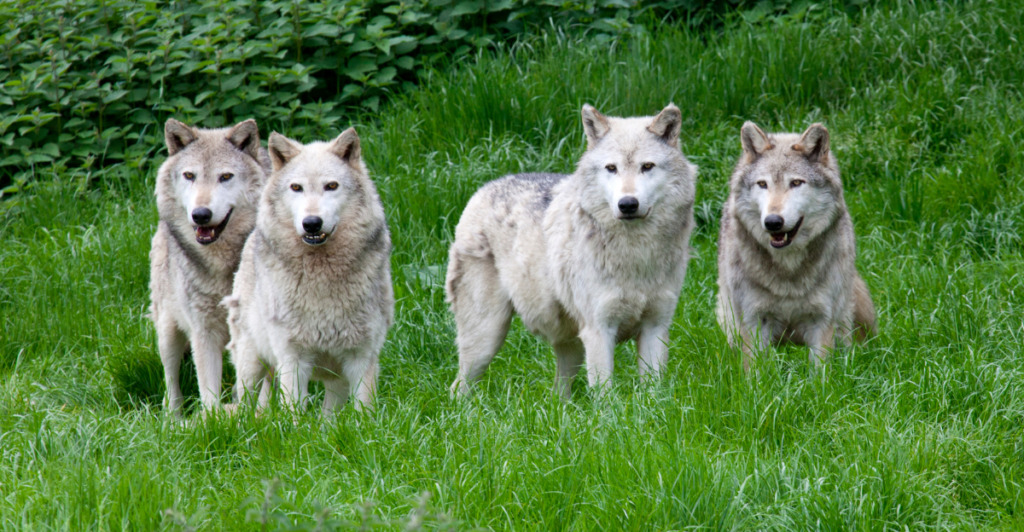
Spotting a wolf or a coyote in the wild can be thrilling, but distinguishing between the two can be challenging. These iconic canines share similarities, yet each has distinct traits that set them apart. This guide explores key differences in size, behavior, tracks, and more, helping you identify which animal you’re observing. Whether you’re an outdoor enthusiast or just curious, this gallery will deepen your understanding of these fascinating creatures.
Physical Size – Bigger vs. Smaller

Wolves are significantly larger than coyotes. Adult wolves can weigh 80–120 pounds and stand around 26–32 inches tall at the shoulder. Conversely, coyotes weigh 20–50 pounds and stand about 21–24 inches tall. The wolf’s robust build, broader chest, and muscular frame contrast the coyote’s slender, lightweight physique. Size alone can often indicate which animal you’ve encountered, mainly when observed at a reasonable distance.
Fur Color and Coat Patterns

Wolves typically exhibit gray, white, black, or mixed fur patterns, often with a dense, fluffy appearance that provides warmth. Coyotes generally have tan, gray, or reddish coats with a thinner, sleeker texture. Their tails differ too: wolves have a bushier tail carried low, while coyotes have thinner tails with a black tip, often carried high when alert. Seasonal changes may affect coat thickness, but patterns remain consistent between the species.
Face Shape – Broad vs. Narrow

Wolves possess a broader, blockier face with rounded ears and a thick muzzle, giving them a powerful, commanding look. Coyotes have narrow, angular faces, pointed ears, and a slimmer muzzle. Their facial features often appear fox-like, contrasting sharply with the wolf’s robust, predatory appearance. Paying attention to these facial distinctions can be a helpful identifier, especially in close encounters or through binoculars.
Vocalizations – Howls vs. Yips

The eerie howl of a wolf is deep, long, and resonant, often used to communicate across vast distances. Coyotes produce higher-pitched yips, barks, and shorter howls that usually come in rapid sequences. A pack of coyotes may sound chaotic, while wolves have a more unified, melodic howl. The tone and pattern can help you determine which animal is nearby if you hear these wild calls.
Tracks – Size and Shape

Wolf tracks are more extensive, measuring 4–5 inches long, with broad, well-defined pads. Coyote tracks are smaller, about 2.5–3 inches, and often appear more elongated. Wolves move in straight lines with deliberate, purposeful steps, while coyotes’ tracks may seem more scattered, reflecting their nimble, erratic movement. Studying tracks in soft mud or snow can provide explicit clues about which species passed through.
Hunting Styles – Packs vs. Solitary

Wolves are pack hunters, relying on coordinated teamwork to take down large prey like deer or elk. Coyotes are more opportunistic and versatile, often hunting alone or in pairs to catch smaller animals such as rabbits or rodents. Their size and social structure influence this difference in hunting strategy, showcasing how each species has adapted to survive in its environment.
Diet – Carnivore vs. Omnivore

While both wolves and coyotes are carnivorous, their diets differ slightly. Wolves primarily target large prey, including ungulates like moose and caribou. Coyotes, being smaller and more resourceful, consume a mix of small mammals, birds, insects, and even fruits or human food scraps when available. Observing diet-related behaviors, such as scavenging or hunting patterns, can offer insights into the species you’re observing.
Habitat Preferences – Wild vs. Urban Adaptability

Wolves prefer remote wilderness areas, thriving in forests, tundras, and mountains where they can roam vast territories. Conversely, coyotes are highly adaptable and can be found in rural, suburban, and even urban areas. Their ability to coexist with humans has expanded their range significantly, making coyotes a more common sight in residential neighborhoods.
Tail Movement – Subtle Clues

A wolf’s tail is often held low, reflecting its calm, confident demeanor. In contrast, a coyote’s tail is more expressive and carried higher when alert or running. This subtle difference can help distinguish the two in fleeting encounters. Coyotes often use tail gestures to communicate, while wolves rely more on vocalizations and body posture within their pack dynamics.
Behavior – Bold vs. Cautious

Wolves are cautious and elusive, generally avoiding human contact. They are less likely to approach populated areas. Coyotes, however, are bolder and more curious, often venturing closer to humans in search of food. Their fearless adaptability makes them frequent visitors to backyards and urban parks. Observing an animal’s behavior around people can provide a key clue to its identity.
Social Structure – Pack vs. Pair

Wolves are highly social animals, living and hunting in tight-knit packs led by an alpha pair. Coyotes are more flexible in their social structure, often living in pairs or small family groups but capable of thriving alone. This difference in social behavior reflects their unique survival strategies and can be observed through group dynamics during encounters.
Appreciating Both Species

Understanding the differences between wolves and coyotes enhances our appreciation for these incredible creatures. Both play vital roles in maintaining ecosystem balance, each contributing uniquely. Whether trekking through a forest or observing wildlife from afar, recognizing these distinctions can enrich your outdoor experiences. Next time you spot a canine in the wild, you’ll have the tools to tell if it’s a wolf or a coyote!
Stay connected with us for more stories like this! Follow us to get the latest updates or hit the Follow button at the top of this article, and let us know what you think by leaving your feedback below. We’d love to hear from you!







